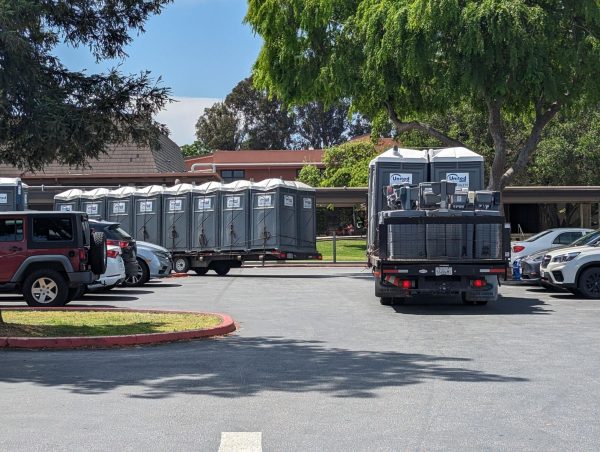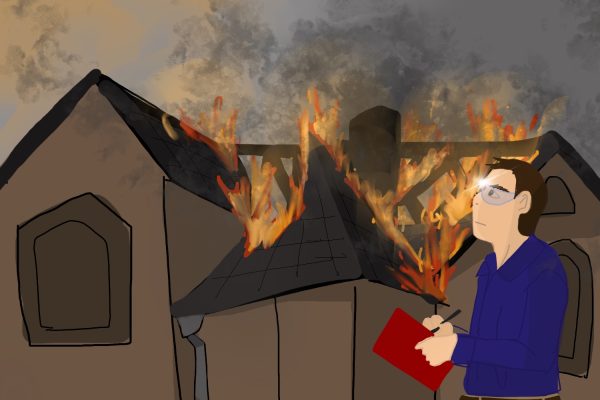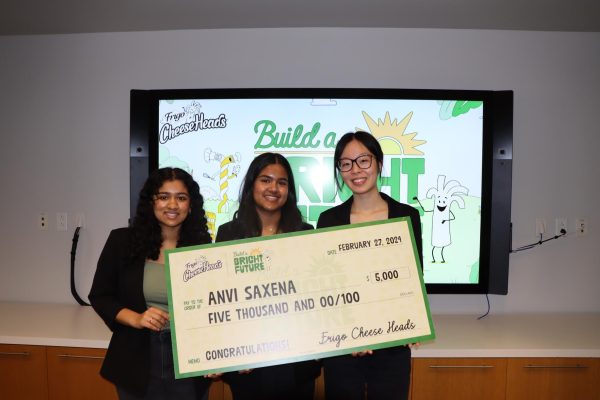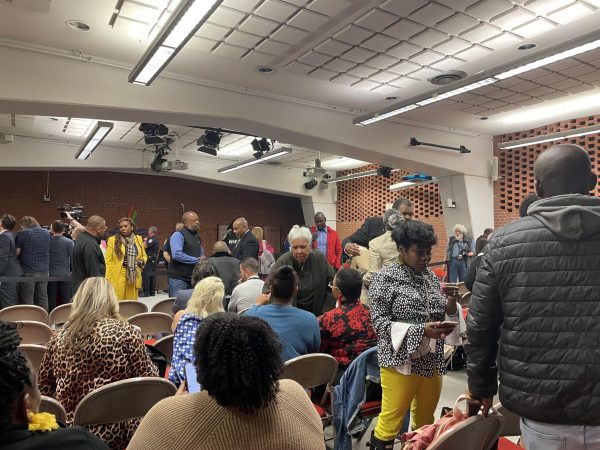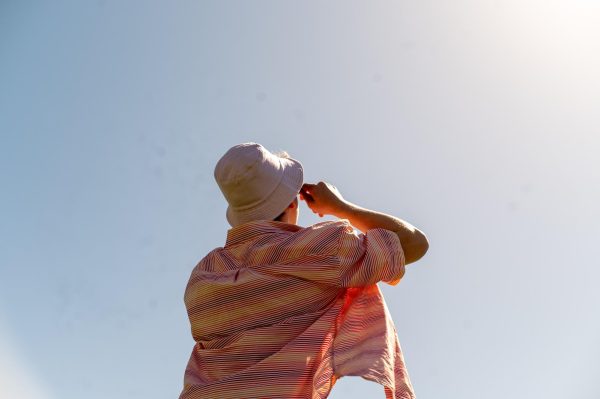Viking Solidarity with BLM
How Oakmont students are getting involved in BLM
September 4, 2020
The recent political and social turmoil following the murder of George Floyd has shifted the Black Lives Matter (BLM) movement to the center of the world stage, with young activists leading the pack.
Young people universally have begun to delve into social activism through a host of platforms, notably social media. Students at Oakmont have joined the community of young activists with great fervor.
“I have been active in current political/social issues by spreading awareness online through reposting important social media posts . . . and following important organizations,” junior Kadie Kong said.
Social Media has allowed students to amplify their often unheard voices and disperse helpful information to encourage self-education on systemic racism and other foundational social justice issues.
“I post occasionally on my Instagram story, typically informational posts of new events and ways to support the racial injustice movement . . . and follow local resources that notify me of any upcoming protest,” junior Lillia Pryor said.
In addition to social media, students at Oakmont have been taking to the streets to voice their support of Black Lives Matter, mirroring those around the world.
“I’ve been in a small protest near a CVS,” junior Psalm Catanglan said. “Even though it was only someone and I, we still got a lot of hate in general.”
For a handful of student activists, protests have been a rewarding experience and a largely peaceful, uninterrupted embodiment of solidarity against oppression.
“[Protesting] was interesting; the cops were on edge but the group I was with was respectful,” junior Abigail McWherter said. “There was a moment where we could share and I heard very powerful stories that made me realize how different my life is from others.”
Many others described a similar, completely pleasant protesting experience.
“[Protesting] was supportive and happy,” recent Oakmont graduate Vraj Shah said.
However, for some students, protesting was less than ideal as they faced violent retaliation from cops and other BLM opposers.
“Going to protests during the pandemic had made it weird as it already was, but going to the protest with so much negative expectancy from the police around thinking that we’ll start violence was even more weird and a little scary,” Pryor said.
Students at Oakmont often respond to the movement for advocacy of social injustice with ardor because they have experienced racism and discrimination first hand.
“It’s normalized so much that it’s shrugged off, but I know a lot of people would make racist jokes [about me],” Catanglan said.
For those who have not experienced racism, being a witness to racism and discrimination has shaped their perspective on being a good ally to the BLM movement.
“I have not [experienced racism], which is due to my privilege, but I have seen plenty of people experience these things which gives me even more reasons to stay proactive,” senior Emmery Schuetz said.
Across the board, regardless of whether they have been a victim to racism, young activists at Oakmont agree that being a proponent of Black Lives Matter is an important battle in the war for equality.
“It’s important to me because I want to be a part of the fight for equality, I don’t just want to sit and watch history be made,” Pryor said.
Young activists want to encourage other young people to be politically involved, especially in the BLM movement.
“Everyone’s fed up with the over-imprisonment, police brutality, racism in schools, workplaces, in public and more,” junior Jack Earnest said. “Young people need to take action because no one else is. If [young people] are not [advocating, they’re] just adding to the problem.”
Earnestly fighting for change as a whole, students at Oakmont have vastly different opinions on the role the administration is playing in addressing BLM and social injustice; some believe the school has done an adequate job.
“I think Oakmont’s staff, especially the teachers, are doing a fantastic job of addressing the issue by educating us on it,” Pryor said.
On the other hand, a myriad of Oakmont students believe the school’s response to BLM was lackluster.
“There have been so many cases where students will say crude slurs or target POC and face little to no punishment, all that happens is an apology email,” Earnest said. “Punishment should be more severe but also there should be more teachings about kindness and acceptance.”
Students believe it’s crucial that Oakmont show solidarity with the movement in order to support victims of racism.
“I think it’s important for the school to support social justice issues because everyone needs to be educated on this topic, and if teachers enforce equality, students would feel safer than if administration let those injustices happen,” junior Alexis Bacorro said.
Oakmont’s administration has been taking steps to address these social justice issues and give students the opportunity to see more inclusion of diverse narratives.
“I’ve met with teachers to talk about how our books can include more authors of color, we’re starting an ethnic studies course, and we’ve set up an advisory committee for the site council to give students an opportunity to talk about these issues,” Principal Robert Hasty said. “Our Newsletter will have a different theme each month, including Hispanic Latino Heritage in September.”
Oakmont students are optimistic about the change that their activism, along with others universally, will enable for social justice.
“The BLM movement is changing the world,” Catanglan said.
This story was originally published on Norse Notes on September 3, 2020.



























![IN THE SPOTLIGHT: Junior Zalie Mann performs “I Love to Cry at Weddings,” an ensemble piece from the fall musical Sweet Charity, to prospective students during the Fine Arts Showcase on Wednesday, Nov. 8. The showcase is a compilation of performances and demonstrations from each fine arts strand offered at McCallum. This show is put on so that prospective students can see if they are interested in joining an academy or major.
Sweet Charity originally ran the weekends of Sept. 28 and Oct. 8, but made a comeback for the Fine Arts Showcase.
“[Being at the front in the spotlight] is my favorite part of the whole dance, so I was super happy to be on stage performing and smiling at the audience,” Mann said.
Mann performed in both the musical theatre performance and dance excerpt “Ethereal,” a contemporary piece choreographed by the new dance director Terrance Carson, in the showcase. With also being a dance ambassador, Mann got to talk about what MAC dance is, her experience and answer any questions the aspiring arts majors and their parents may have.
Caption by Maya Tackett.](https://bestofsno.com/wp-content/uploads/2024/02/53321803427_47cd17fe70_o-1-1200x800.jpg)
![SPREADING THE JOY: Sophomore Chim Becker poses with sophomores Cozbi Sims and Lou Davidson while manning a table at the Hispanic Heritage treat day during lunch of Sept 28. Becker is a part of the students of color alliance, who put together the activity to raise money for their club.
“It [the stand] was really fun because McCallum has a lot of latino kids,” Becker said. “And I think it was nice that I could share the stuff that I usually just have at home with people who have never tried it before.”
Becker recognizes the importance of celebrating Hispanic heritage at Mac.
“I think its important to celebrate,” Becker said. “Because our culture is awesome and super cool, and everybody should be able to learn about other cultures of the world.”
Caption by JoJo Barnard.](https://bestofsno.com/wp-content/uploads/2024/01/53221601352_4127a81c41_o-1200x675.jpg)




